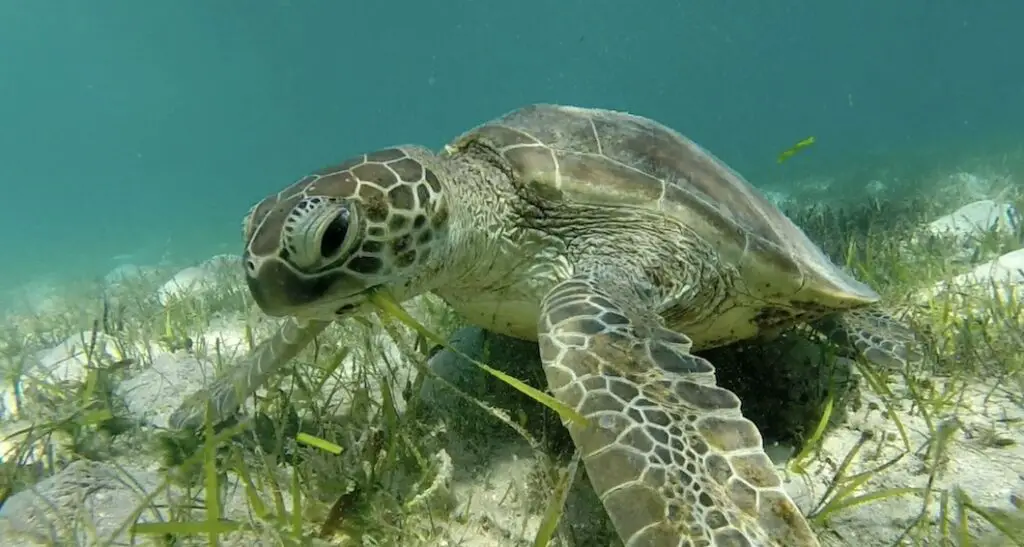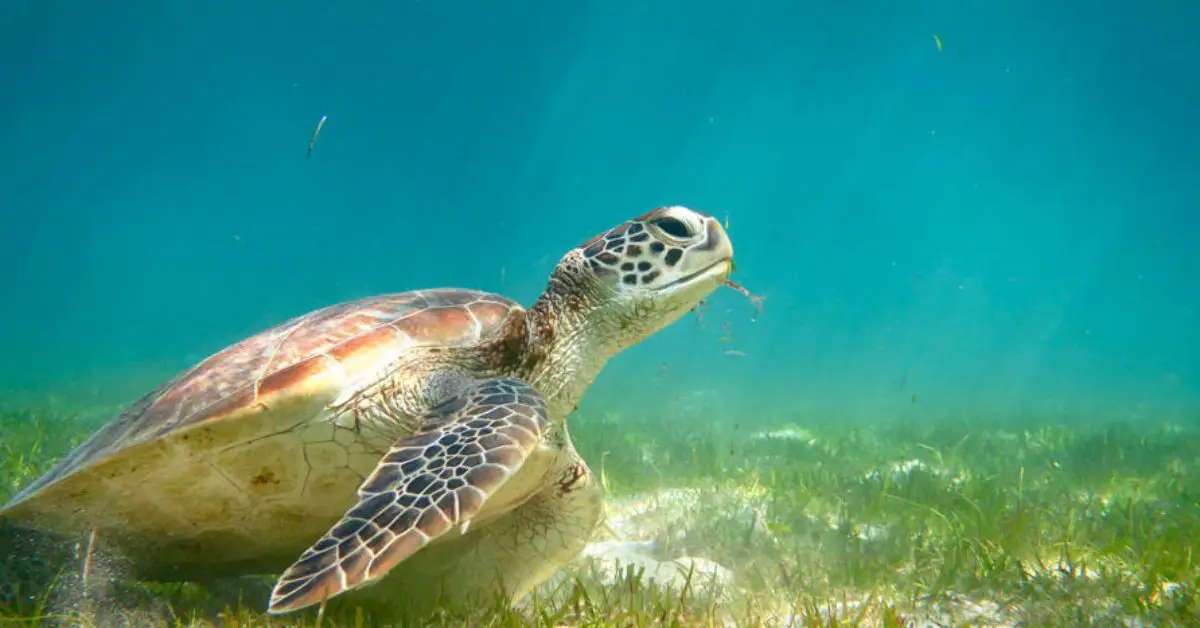Turtles are one of the most fascinating creatures inhabiting planet Earth. Known for their unique shells and slow-paced lifestyle, these reptiles are often the center of attention for wildlife enthusiasts and scientists alike. One of the most common questions that arise when discussing turtles is their eating habits. Do they eat algae?
This question has been a topic of much debate and has sparked the interest of many, including marine biologists and pet owners. In this article, we delve deep into the eating habits of turtles and provide an in-depth analysis of their diets, with a particular focus on whether or not they consume algae.
Algae are a ubiquitous form of aquatic plants that exist in most freshwater and marine ecosystems. They are an important source of food for many aquatic animals and play a crucial role in maintaining the ecological balance of their respective habitats.
However, when it comes to turtles, many people wonder if these gentle reptiles also consume algae as part of their dietary intake. In this article, we explore the question of whether or not turtles eat algae and examine the impact of such consumption on their health and wellbeing.
The Importance of Algae in a Turtle’s Diet
Algae is an essential part of a turtle’s diet, especially for species that are predominantly herbivorous. It serves as a vital source of essential nutrients, including protein, carbohydrates, vitamins, and minerals. Furthermore, algae aids in the improvement of digestion and the absorption of these nutrients in the turtle’s digestive system. Algae is also low in fat and high in fiber, making it an excellent food source for turtles who have a greater need for fiber in their diet.

In addition to providing the necessary nutrients, algae also helps keep turtles’ digestive systems healthy. Turtles that consume too much protein without consuming enough fibrous content can suffer from digestive issues. However, algae helps in regulating the digestive system to ensure that the turtle’s digestive health is maintained. Overall, it is crucial to include algae in a turtle’s diet, particularly for herbivorous turtles, to ensure that they maintain optimal growth and health.
The Types of Algae Turtles Prefer to Eat
Turtles are omnivores and they feed on a wide variety of food items which includes both plant and animal matter. When it comes to their plant-based diet, algae is a significant part of their daily food intake. Turtles prefer to eat certain types of algae that offer them the required nutrients and minerals necessary for their growth and overall health.
Green algae, also known as filamentous algae is one of the most preferred types of algae by turtles. They feed on this algae primarily because it is easy to digest and is rich in nutrients such as chlorophyll and essential amino acids. Another type of algae that turtles consume is diatoms. This type of algae contains high levels of silica which is essential for the development of a turtle’s shell. Additionally, red and blue-green algae are also eaten by turtles, however, they are not as commonly consumed as green and diatom algae.
You may also like: Are Turtles Considered Dinosaurs?
How Often Should Your Turtle Consume Algae?
Turtles can eat algae, but it should not be a significant part of their diet. Algae provides little nutritional value and may cause health problems if consumed in large amounts. Therefore, it is crucial to monitor your turtle’s intake of algae and ensure that it is not their primary food source.
As a general rule, turtles should only consume algae as an occasional treat. You should offer your turtle algae once or twice a week at most, and only in small amounts. This will allow your turtle to enjoy the benefits of algae without having any adverse effects on its health. Remember, a balanced diet is essential to keep your turtle healthy and happy. So, make sure to provide a variety of food sources, including vegetables, insects, and fish.
The Benefits and Drawbacks of Feeding Your Turtle Algae
The Benefits and Drawbacks of Feeding Your Turtle Algae
Algae is a natural food for turtles in the wild, and some experts even recommend feeding your pet turtle algae. One of the benefits of feeding your turtle algae is that it is a low fat, high-protein food that contains essential nutrients. Algae also provides added health benefits, such as improving a turtle’s immune system and digestion. Additionally, it’s an easy food source to grow at home, making it a cost-effective option for pet owners.
However, there are some potential drawbacks to feeding your turtle algae. While they may enjoy eating it, they may not get enough nutrition from it alone, leading to deficiencies in vital vitamins and minerals. Moreover, algae can be contaminated easily with harmful bacteria and toxins, which may pose a risk to your pet’s health. Therefore, it’s important to supplement your turtle’s diet with other nutritious foods and ensure that the algae you provide is sourced from a reputable supplier or grown safely at home.
Recommended Reading: How Long Can Box Turtles Hold Their Breath?
What Other Foods Can Complement a Turtle’s Algae Diet?
While algae is an important part of a turtle’s diet, it should not be the sole source of nutrition for the reptile. To ensure that your turtle stays healthy and happy, it is essential to offer other additional foods as well. It is better to change their food and feeding routine per day so that they can get an adequate amount of nutrients.
Some of the foods that can complement a turtle’s algae diet include aquatic plants, such as water lettuce, water hyacinth, and duckweed. Vegetables like carrots, squash, and leafy greens are also good options. Additionally, turtles can eat fruits such as berries, bananas, and apples – in moderation. Insects and worms like mealworms and redworms are another excellent source of protein for turtles. An ideal diet for turtles should consist of 50% aquatic plants, 25% vegetables, and 25% protein such as insects and worms. By mixing different types of food, the turtle can enjoy a varied and balanced diet.
Common Misconceptions About Turtles and Algae
Turtles have a reputation for being algae-eaters, but that isn’t entirely true. While turtles in captivity may be fed algae as part of their diet, wild turtles primarily feed on plants and insects. It’s important to remember that turtles are diverse in their feeding habits and preferences, so what one turtle enjoys eating might not be the same for another.
Another common misconception about turtles and algae is that algae are always safe for them to eat. This isn’t necessarily true either. Some types of algae can be toxic to turtles and even other aquatic animals, causing illness or death. It’s essential to identify the type of algae in your turtle’s environment and ensure it’s safe for consumption before allowing them to eat it. Overall, while turtles may eat algae, it’s not their primary food source, and it’s important to be mindful of the potential risks.
More to Explore: Why Do Turtles Cross The Road?
Tips for Cultivating Algae for Your Turtle’s Diet
Turtles require a balanced diet that includes protein, vegetables, and algae. Algae contain essential nutrients, vitamins and minerals that are essential for the turtles’ growth and well-being. However, not all algae species are safe for your turtle to consume, and some can even be harmful or toxic. Thus, cultivating algae at home is an efficient way to ensure your turtle’s diet is complete, safe and well-controlled.
To cultivate algae, one can start by setting up a small aquarium that allows natural sunlight and oxygen to enter the water. Introduce healthy algae species like spirulina, chlorella, and seaweed and avoid overfeeding your turtle, as it can lead to an increase in harmful bacteria or parasites. Keep the aquarium clean, maintained and free of potential contaminants like pesticides and fertilizers. By following these basic tips, you can cultivate a nutritional and balanced algae diet for your turtle that helps to support their health and wellbeing.
Final thoughts
To sum up, turtles are omnivorous animals that can eat different types of food. While algae are a crucial part of some turtles’ diets, not all turtle species consume algae. Green sea turtles, for instance, are known to consume up to 90% of their diet in seagrasses and algae, whereas other turtle species concentrate on eating insects, small mollusks, or even small fish.
The question – do turtles eat algae? – is a valid one and has been answered from different angles. By exploring the dietary preferences of different turtle species and the needs of algae in the ecosystem, we can appreciate the intricate relationship between these organisms. Understanding the diet of turtles can help us to manage their populations sustainably while maintaining a healthy underwater environment.
Further Reading: What Is Yertle The Turtle About?

